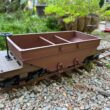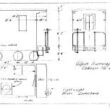The free version of NodeEra is available on our GitHub repository.
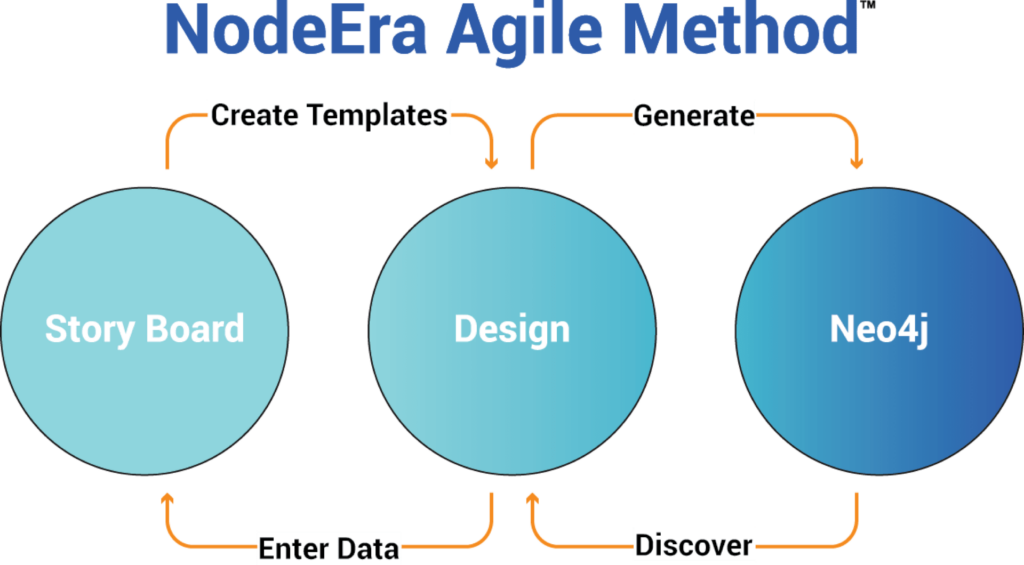
Connecting The Dots
NodeEra is the world’s leading Neo4j property graph schema design tool. Use the whiteboarding tool to freehand draw your new ideas and immediately test your use cases with the Cypher query tool. Turn your prototype nodes and relationships into a design data model with graphical diagrams. Already have an existing Neo4j database? No problem – just reverse engineer into a design model and go from there. Welcome to NodeEra!
FEATURES
Template Diagrams
- Video – How To Create A Template Diagram
- Video – How To Define A Node Template
- Video – How To Define A Relationship Template
The free version of NodeEra is available on our GitHub repository.
The template diagram is a graphical data modeling tool for property graph designs. You can define node and relationship templates and arrange them graphically on the screen. Do you have a large or complex property graph? Don’t worry you can create as many different diagrams as you need to capture the entire design. Each design template captures the metadata that defines a “type” of node or relationship in the property graph. Each template provides an editable data grid so you can quickly add test data to a new design. Templates also generate Cypher match statements that will retrieve data that conforms to the design template.
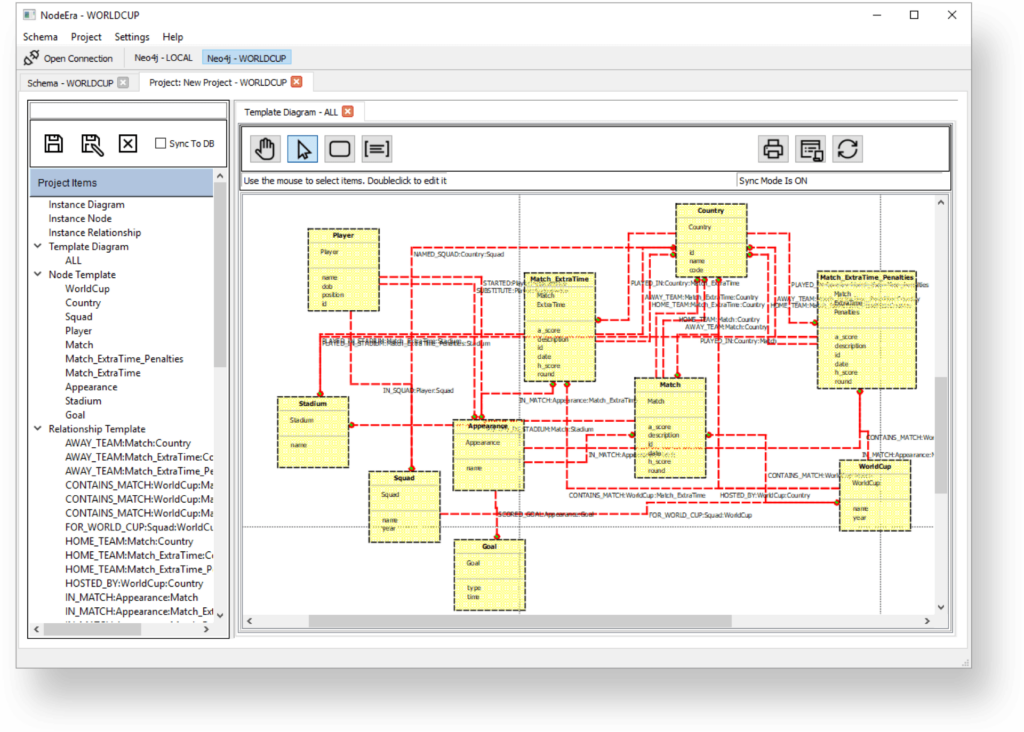
Instance Diagrams
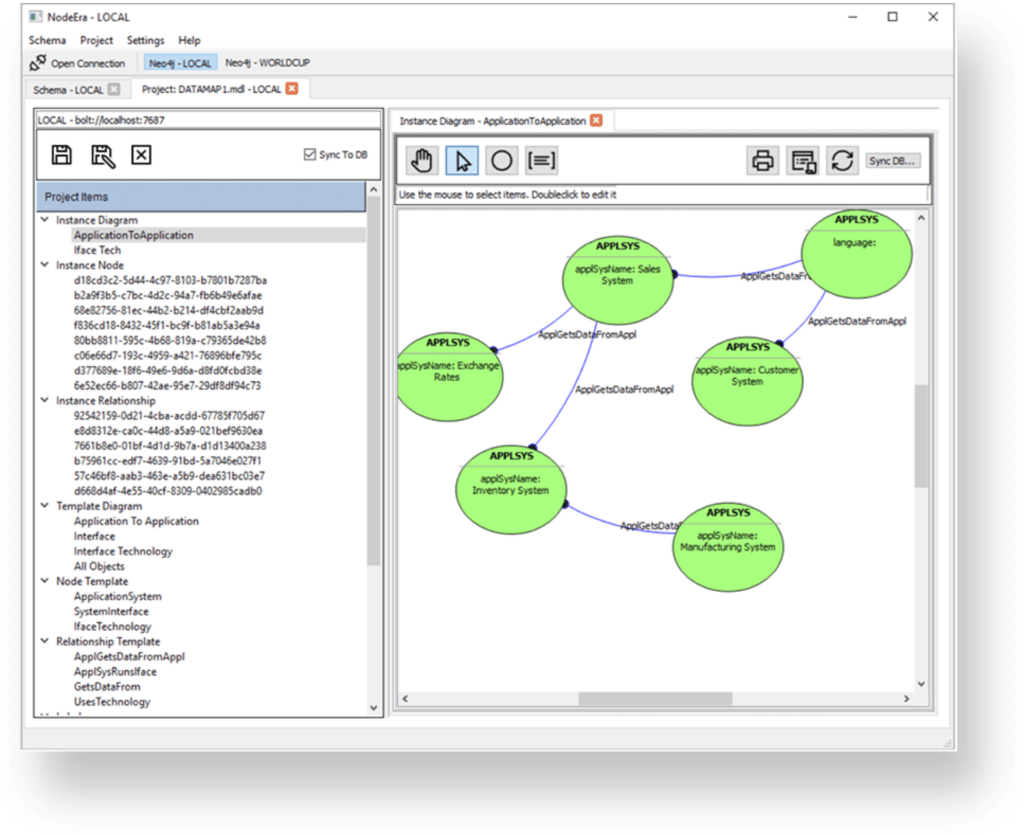
Video – Explore An Existing Neo4j Database Using Instance Diagrams
Stop creating paper and pencil drawings and easily prototype nodes and relationships by drawing them on the instance diagram. Enter any combination of Labels, Properties, and Relationship types you want – this is the advantage of the schema on demand Neo4j property graph model. While you are creating the diagram, the nodes and relationships are automatically populated to your connected Neo4j instance – or work offline – you can always sync later. Easily create design templates once you are happy with the nodes and relationship on the diagram.
Reverse Engineer Design Templates
Video – How To Reverse Engineer A Neo4j Database
Many people start out with an existing Neo4j database (and probably little to no documentation of the property graph design). NodeEra is ready to help out in this situation with it’s reverse engineering facility! Reverse Engineering will scan all the nodes and relationships in a connected Neo4j instance and identify all of the possible node and relationship templates. Once you’ve completed reverse engineering and generated the node and relationship templates you can continue with adding additional metadata and creating template diagrams.
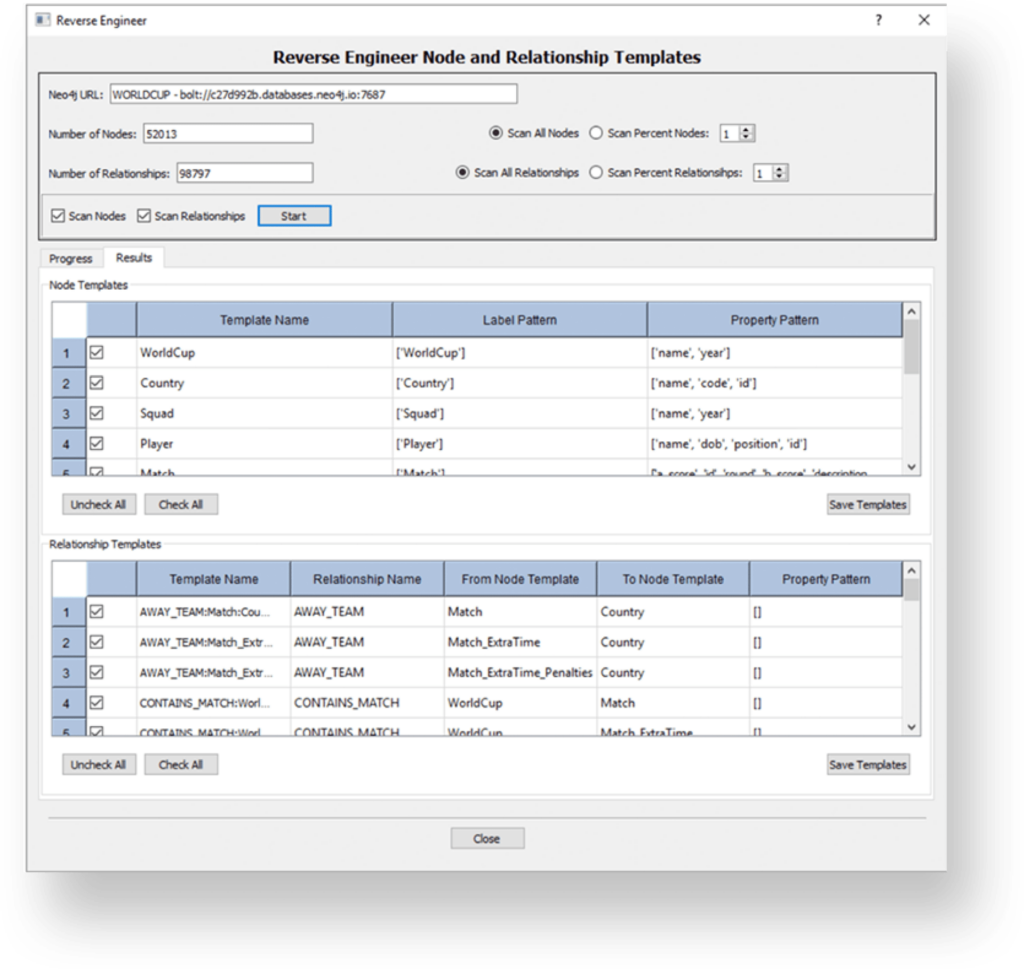
Cypher Editor
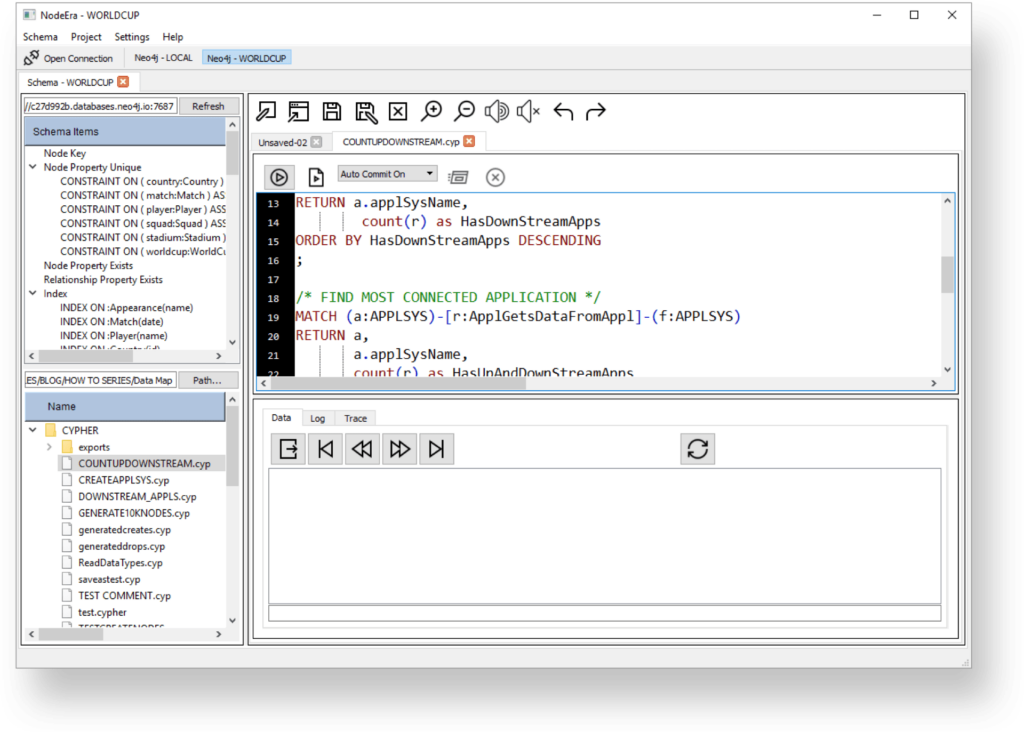
The Cypher Editor is a professional strength programming editor based on Qscintilla that will greatly enhance your ability to create and test Cypher queries. The tabbed interface allows you to have multiple files open and each file can have multiple Cypher statements.
You can manage transactions (commit and rollback) and run multiple Cypher commands in one file as a script.
Forward Engineer Neo4j Schema Objects
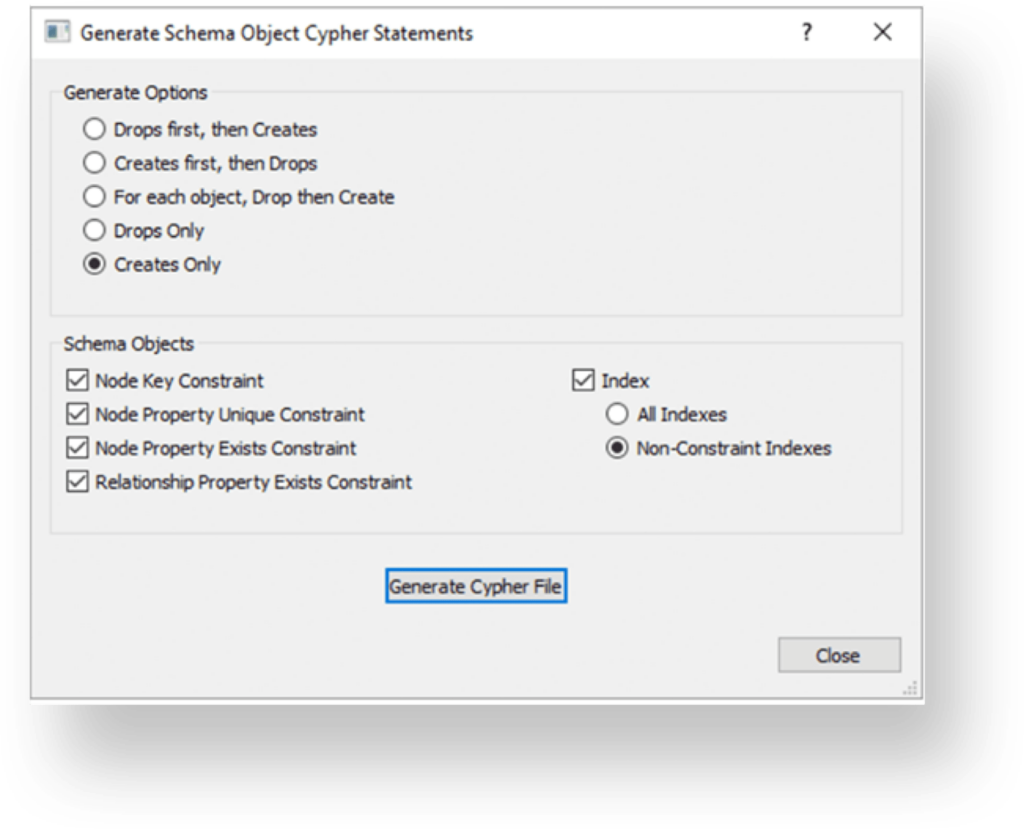
Video – How To Forward Engineer A Neo4j Database
One step in completing a node or relationship template is to define the constraints and indexes needed to support the design. The forward engineering facility will generate Cypher create and drop statements from the design templates in a script file that you can run in the Cypher editor. This allows you to implement your design in any connected Neo4j instance.
Schema Editor
The Schema Editor provides an easy to use GUI to create and drop Neo4j constraints and indexes. Easily manage custom users and roles for better security of your server. Forward engineering provides a facility to generate Cypher scripts of schema object create and drop statements. Cypher match statements can be automatically generated to retrieve data that conforms to the Labels and Properties defined in constraints and indexes.
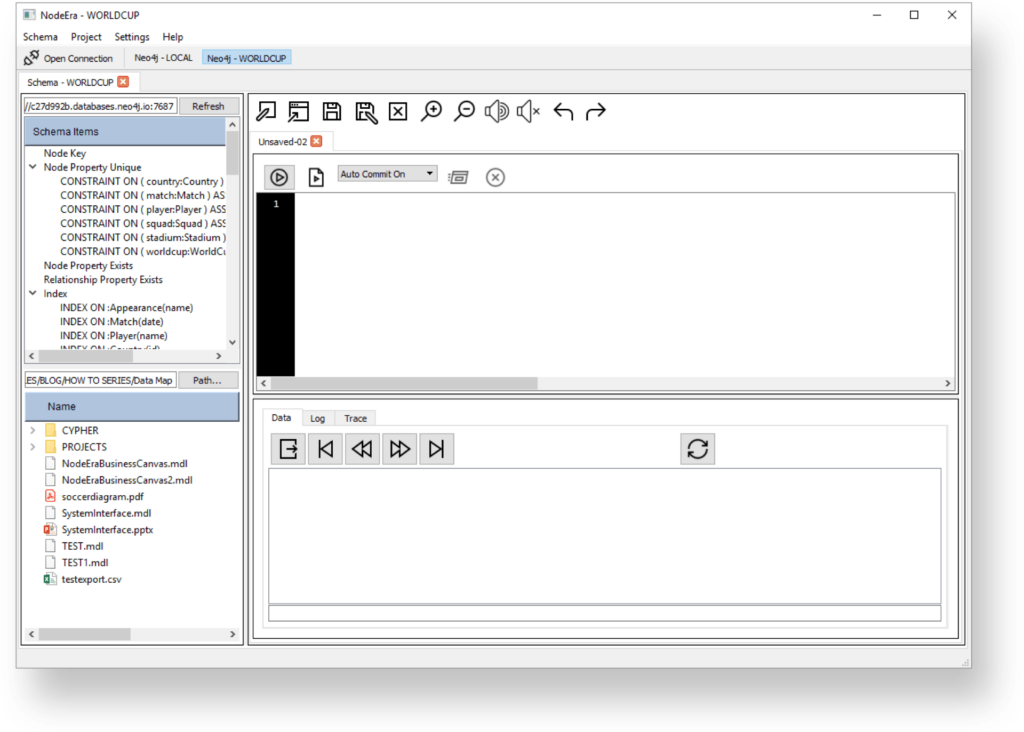
The free version of NodeEra is available on our GitHub repository.
System Requirements
NodeEra is a single user application installed on a desktop or laptop workstation.
Minimum Hardware Requirements
4GB RAM
500M disk space
Supported Operating Systems
Windows 7-10 (32-bit, 64 bit)
Apple MacOS
Network Connections
A network connection is required to connect to remote Neo4j instances
The Neo4j Desktop (provides a local version of Neo4j) also needs a network connection
Supported Neo4j servers
Neo4j Versions 3.x and 4.x are currently supported

